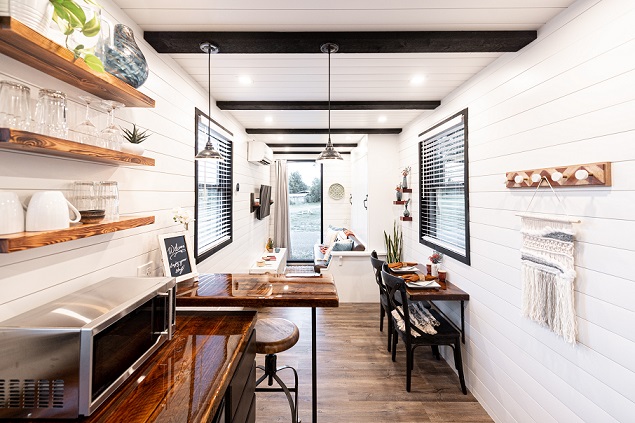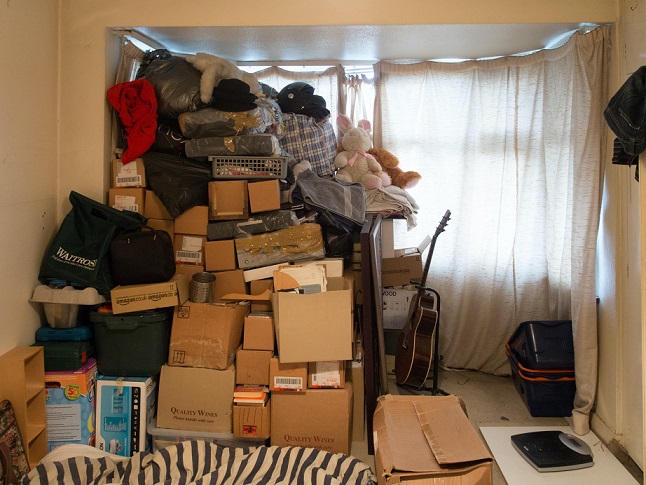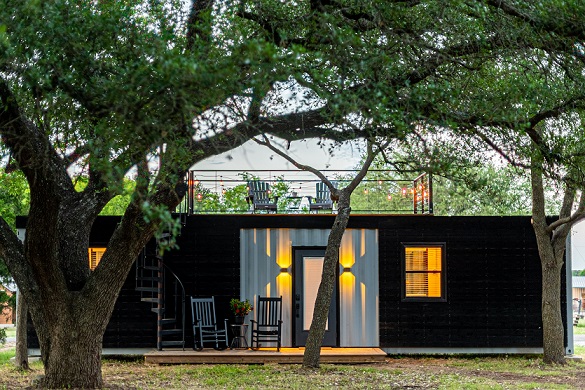Living in small spaces has become a popular trend in recent years, especially in urban areas where space is limited and rent prices are high. Small apartments, tiny houses, and micro-living spaces have become increasingly popular among young professionals, students, and individuals who want to simplify their lives and reduce their environmental footprint.
Despite the challenges of living in a small space, such as limited storage and living space, there are many benefits to this lifestyle. For example, small spaces can be easier to maintain, require less energy to heat and cool, and can encourage a more minimalist lifestyle. Additionally, living in a small space can be an opportunity to get creative with storage solutions and interior design, making the most of every inch of space available.
Whether you are downsizing from a larger home or choosing to live in a small space for environmental or financial reasons, there are many strategies and tips that can help you make the most of your space. From maximizing storage to choosing multi-functional furniture, there are many ways to create a comfortable and functional living space, regardless of its size.
The Appeal of Small Space Living

Living in a small space has become increasingly popular in recent years. While it may seem counterintuitive to some, many people find the appeal of small space living to be irresistible. Here are a few reasons why:
Affordability
One of the most significant appeals of small space living is the cost savings. Smaller homes or apartments tend to be less expensive than larger ones. This makes them a more affordable option for those who are looking to save money on housing costs. Additionally, smaller spaces require less furniture and decor, which can help save even more money.
Minimalism
Small space living often requires a minimalist lifestyle, which can be appealing to those who value simplicity and organization. With limited space, individuals are forced to prioritize their belongings and keep only what is necessary. This can lead to a more streamlined and clutter-free living environment.
Environmental Impact
Living in a small space can also have a positive impact on the environment. Smaller homes require less energy to heat and cool, which can help reduce carbon emissions. Additionally, small space living can encourage individuals to consume less and live a more sustainable lifestyle.
Coziness
Finally, many people find the cozy atmosphere of small spaces to be appealing. A smaller living space can feel more intimate and inviting, creating a sense of comfort and warmth. With the right design and decor, a small space can feel like a cozy oasis in the midst of a bustling city.
Maximizing Space in Small Homes
Living in a small home can be challenging, but with the right strategies, you can make the most of your space. Here are some tips for maximizing space in small homes:
Furniture Choices
Choosing the right furniture is crucial when it comes to maximizing space in a small home. Opt for multifunctional pieces that serve more than one purpose. For example, a sofa bed can be used as a couch during the day and a bed at night. Drop-leaf kitchen tables, compact chairs, and nesting tables are also great options for small spaces.
Additionally, using furniture with exposed legs and chairs without arms can give the illusion of more space. Mounting your TV on the wall can also free up valuable floor space.
Storage Solutions
Storage is one of the biggest challenges when it comes to living in a small home. To maximize your space, choose furniture with built-in storage, such as storage ottomans or bed frames with drawers. Utilize vertical space by installing shelves or using tall bookcases that extend to the ceiling.
Another storage solution is to use hooks and hanging organizers to keep items off the floor and out of the way. For example, hanging clothes can free up closet space for other items.
Color and Light
Color and light can also make a big difference in how spacious a small home feels. Lighter colors can make a room feel larger and brighter, while darker colors can make a room feel smaller and more cramped. Using mirrors can also create the illusion of more space by reflecting light and making a room feel larger.
In terms of lighting, natural light is the best option for small spaces. If natural light is limited, consider using floor lamps or table lamps to create a cozy and inviting atmosphere.
By implementing these tips, you can maximize your space and create a comfortable and functional living environment in your small home.
Challenges of Living in Small Spaces
Living in a small space can be a great way to save money and reduce clutter. However, it also comes with its own set of challenges. Here are some of the most common challenges people face when living in small spaces.
Limited Storage

One of the biggest challenges of living in a small space is limited storage. When you don’t have a lot of space, it can be difficult to find places to store all of your belongings. This can lead to clutter and make your space feel even smaller.
To combat this issue, it’s important to be creative with your storage solutions. Consider using multi-functional furniture, such as a bed with built-in drawers or a coffee table with storage space. You can also use vertical space by installing shelves or hanging organizers.
Entertaining Guests
Another challenge of living in a small space is entertaining guests. When you don’t have a lot of room, it can be difficult to host friends and family. You may not have enough seating or space to prepare food and drinks.
To make the most of your small space when entertaining, consider using flexible furniture. Folding chairs and tables can be easily stored away when not in use. You can also use your outdoor space, if you have one, to expand your entertaining area.
Privacy Issues
Living in a small space can also create privacy issues. When you’re living in close quarters with others, it can be difficult to find a quiet space to relax or work. You may also feel like you don’t have enough personal space.
To address privacy issues, consider using room dividers or curtains to create separate areas in your space. You can also use noise-cancelling headphones or white noise machines to block out distractions. Finally, it’s important to communicate with your roommates or family members about your need for privacy and personal space.
Benefits of Living in Small Spaces
Living in a small space has many benefits that can make life easier, less stressful, and more enjoyable. Here are some of the top benefits of living in small spaces:
Lower Costs

One of the biggest advantages of living in a small space is the lower costs associated with it. Smaller spaces require less furniture, which means you will spend less money on furnishing your home. Additionally, smaller spaces are typically less expensive to rent or buy than larger spaces, which can help you save money on housing costs.
Less Maintenance
Another benefit of living in a small space is that it requires less maintenance. With fewer rooms and less square footage, there is less to clean, organize, and maintain. This means you will spend less time and money on cleaning, repairs, and upkeep, and more time doing the things you enjoy.
Environmentally Friendly
Living in a small space is also environmentally friendly. Smaller spaces require less energy to heat and cool, which means you will use less electricity and gas. Additionally, living in a smaller space encourages you to be more mindful of your consumption habits, which can help reduce your carbon footprint and contribute to a healthier planet.
Overall, living in a small space can be a great way to simplify your life, save money, and reduce your environmental impact. With lower costs, less maintenance, and a smaller carbon footprint, it’s no wonder that many people are choosing to downsize and embrace small space living.
Tips for Transitioning to a Smaller Space
Moving to a smaller space can be a major transition, but it doesn’t have to be overwhelming. Here are some tips to help make the process smoother and less stressful.
Downsizing
One of the biggest challenges when moving to a smaller space is deciding what to keep and what to get rid of. To make the process easier, start by making a list of the things that are most important to you. This might include sentimental items, practical items, or things that bring you joy.
Next, go through your belongings and decide what you can live without. Be honest with yourself about what you really need and what you can do without. Consider donating or selling items that are still in good condition, but that you no longer use or need.
Organization Tips
Living in a smaller space requires careful organization to make the most of the space you have. Here are some tips for staying organized in a small space:
- Use vertical space: Make use of wall space by installing shelves or hanging organizers.
- Maximize storage: Look for furniture that doubles as storage, such as a bed with built-in drawers or a coffee table with hidden storage.
- Keep surfaces clear: Avoid clutter by keeping surfaces clear and only displaying items that are functional or decorative.
- Use containers: Use containers to keep small items organized and easy to find. Label containers to make it easy to locate what you need.
Embracing Minimalism
Living in a small space often requires a shift in mindset towards minimalism. Embrace the idea of living with less and focus on quality over quantity. Here are some tips for embracing minimalism:
- Invest in quality items: Instead of buying cheap, disposable items, invest in quality items that will last but also save space.
- Simplify your wardrobe: Stick to a few key pieces that can be mixed and matched to create a variety of outfits.
- Practice gratitude: Focus on what you have, rather than what you don’t have. Practice gratitude for the things that bring you joy and add value to your life.
By following these tips, transitioning to a smaller space can be a positive and rewarding experience.
Conclusion: Living in Small Spaces

Living in small spaces is a lifestyle that has become increasingly popular in recent years. While it may not be for everyone, there are certainly benefits to downsizing and simplifying one’s living space.
One of the most significant advantages of living in a small space is the potential for cost savings. Smaller homes or apartments usually have lower rent or mortgage payments, as well as lower utility bills. Additionally, living in a small space often encourages people to be more intentional with their purchases and possessions, which can lead to less spending overall.
Another benefit of small space living is the potential for a more environmentally sustainable lifestyle. Smaller homes require less energy to heat and cool, and typically have a smaller carbon footprint overall. Additionally, living in a small space can encourage people to consume less and reduce waste.
Living in a small space can also have positive effects on mental health. As long as the space is clean, orderly, and comfortable, people can thrive in smaller environments. However, it is important to note that some people may feel cramped or uncomfortable in small spaces, so it is not a one-size-fits-all solution.
Overall, living in a small space can be a viable option for those looking to simplify their lives, reduce their environmental impact, or save money. While it may not be for everyone, it is worth considering as a lifestyle choice.
